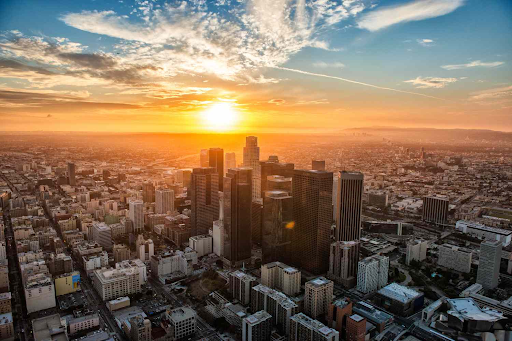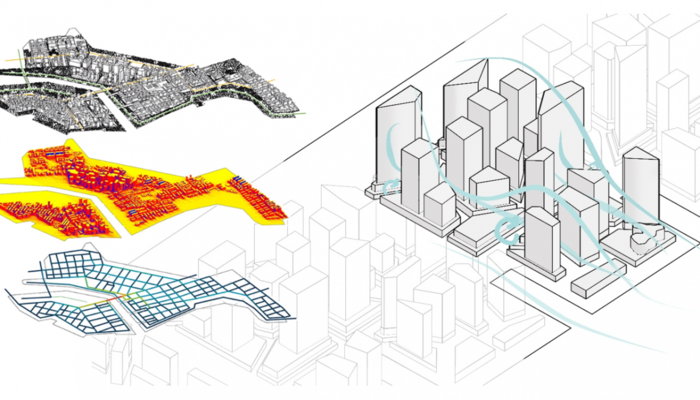The Line Project, Saudi Arabia: A Futuristic Urban Living Concept
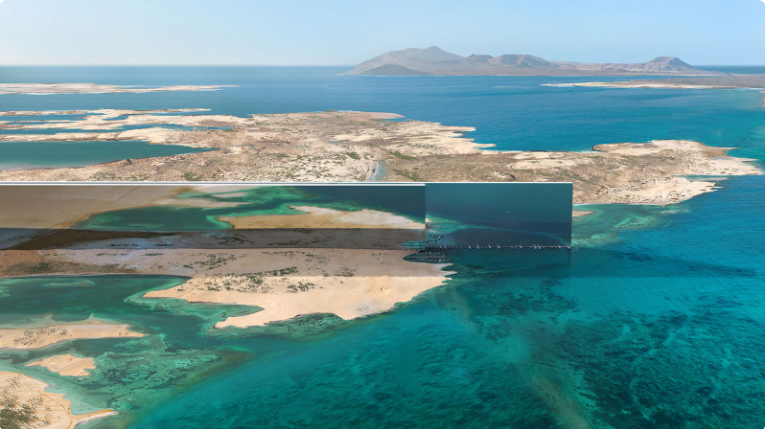
Table of Contents
“Urbanism works when it creates a journey as desirable as the destination” Paul Goldberger.
In essence, the process of urban design is an exercise that deals with creating functional, visually appealing, and sustainable environments for people. It involves the strategic planning and organisation of various elements within urban areas like buildings, streets, parks, amenities, transportation systems, and public spaces. However, given the rise in urban sprawl across the globe, identifying efficient systems for urban design has become all the more challenging. This is where the “The Line” project steps, representing a utopian solution to modern-day city planning.
What is The Line Project?

The Line is a futuristic city in the making. It challenges the conventional urban design approach, which is essentially horizontal expansion. By presenting the vision for a vertical linear smart city, The Line is a radical methodology for city planning called “Zero Gravity Urbanism”. It is a term used to describe the reduced dependency on natural ground planes by stacking floor planes at height.
The Line is proposed as an initiative under the larger vision of the NEOM project, which is a regional development undertaking. The other key regions within the NEOM include the Gulf of Aqaba, Oxagon, Sindalah, and Trojena. Focussing on the Line, it is an urban development project expected to generate employment opportunities, stimulate economic diversification, and contribute USD 48 billion to the domestic GDP by 2030.

Spanning 170 kilometres in linearity, The Line extends from the coast of the Red Sea up to the borders of Tabuk City. The one-building city has a towering height of 500 metres above sea level and is 200 metres wide wherein 95% of the land in the project will be reserved for nature preservation. The Line is designed to house nine million residents, achieving a population density of 2,60,000 people per square kilometre.
Architecturally, the project comprises two mirrored structures separated by an outdoor space between them. This open-to-sky area in the middle serves as a place for recreation and social interaction while enhancing the city’s micro-climate. The expected construction cost of The Line ranges from US$100–200 billion, with certain projections reaching $1 trillion.
Read more: How BIM was Used to Ease the Construction of Abu Dhabi International Airport?
Evolution of the Idea of Vertical Urban Design
The idea of a linear city was first proposed in the late 19th century by the Spanish urban planner Arturo Soria, but its large-scale application could not be materialised. Another notable attempt at vertical city planning happened during the 1950s when Yona Friedman, a French architect, introduced the notion of a unified, adaptable, and vertical "spatial city" as a potential solution to urban sprawl. However, this concept primarily existed as a theoretical concept without practical implementation or impact. In the subsequent decade, the Italian collective Superstudio unveiled an ambitious architectural model aimed at achieving total urbanisation by envisioning a structure that spanned the entire globe. Yet, despite its grand vision, the continuous monument needed more feasibility and practical utility.
Timeline of The Line Project
The Line Project was announced in January 2021 by Saudi Crown Prince Mohammed bin Salman. The table below showcases the further developments in the project ever since.
|
Key Milestone |
Timeline |
|
Project Initiation |
October, 2021 |
|
Commencement of Earthwork |
April, 2022 |
|
Construction of Hidden Marina |
June, 2023 |
|
Completion of the First Segment |
December, 2024 |
|
Completion of the First Project Phase |
2030 |
* The timeline mentioned above is tentative and may vary based on the site conditions and other environmental factors.
Unique Design Features of The Line Project
The Line is a project of global significance given its unique approach to urban development. Let’s delve into the design approach and characteristics of the city with the points mentioned below.
1. High-Density Development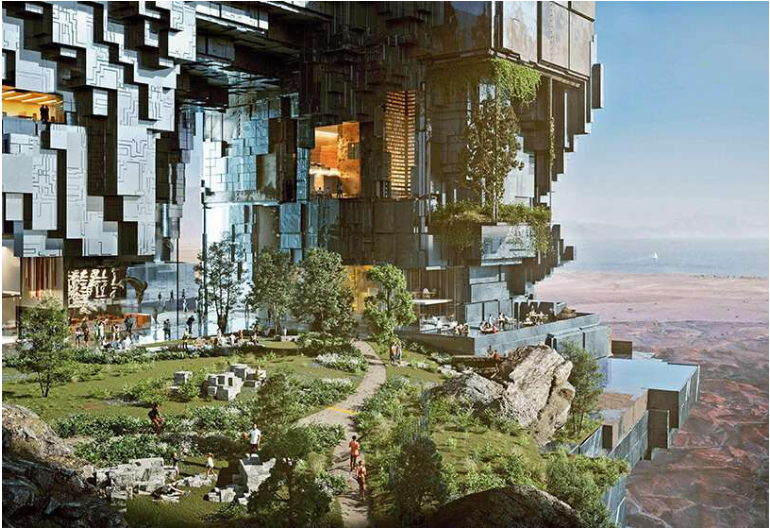
The Line is envisioned as a linear city that maximises land use efficiency by vertically stacking buildings and infrastructure. Such vertical orientation allows the accommodation of a larger population in a smaller space. It is a model for sustainable urbanisation that creates a cognitive city that rises above the constraints of traditional urban sprawl. By building upwards rather than outwards, The Line optimises space utilisation and fosters a compact urban environment where residents can easily access amenities, services, and transportation hubs within proximity. This vertical integration of residential, commercial, and recreational spaces promotes efficiency and connectivity, enhancing the overall project’s livability.
2. Sustainable Transportation System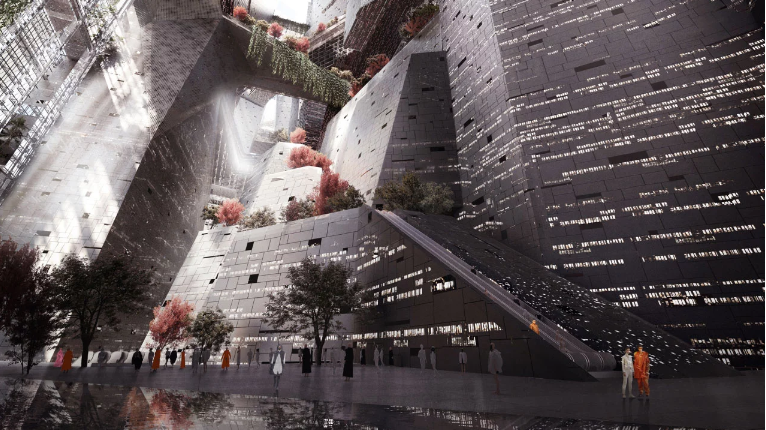
The Line aims to create a zero-car environment that fosters a hundred percent sustainable transport system. By eliminating the need for private automobiles within The Line, the project significantly reduces pollution, greenhouse gas emissions, and congestion. Instead, residents will have access to efficient and eco-friendly modes of transportation, including electric shuttles, high-speed transit, and autonomous mobility solutions. Furthermore, renewable energy sources power the transportation systems in The Line, reducing reliance on fossil fuels and minimizing carbon emissions. Also, the project integrates innovative technologies such as smart traffic management systems and advanced logistics networks to optimise transportation efficiency and reduce energy consumption.
3. Walkability
The concept of walkability lies at the heart of The Line. It has a pedestrian-first design principle that redefines urban living. The project aims to create a city where residents can easily access essential services and recreational spaces within a short walking distance which is touted to be 5 minutes. This promotes a healthier and more active lifestyle which ensures the wellbeing of their citizens. By prioritising pedestrian-friendly infrastructure and ensuring universal access to transportation services, The Line is paving the way for a more sustainable and resilient future.
4. Level-Based Planning
The stacked planning of The Line allows vertical segregation of zones. The city has levels called layers dedicated to three primary functions - pedestrian movement, infrastructure, and transportation. The pedestrian layer will include green spaces, amenities, and recreational areas. The layer of infrastructure will accommodate the network of water supply, sewage systems, electricity, and telecommunications. The third layer of transportation may incorporate transportation tunnels, storage facilities, and underground parking structures. Essentially, the city is structured as a three-dimensional arrangement of buildings encircling pedestrian-friendly communal areas devoid of roads, vehicular congestion, environmental contaminants, and noise.
5. Optimal Annual Climate
By embracing renewable and clean energy, reducing carbon footprint, and building in coherence with nature, The Line aims to create a micro-climate where residents can enjoy pleasant weather conditions throughout the year. With the implementation of innovative passive climate control technologies, The Line seeks to maintain ideal temperatures both indoors and outdoors. By fostering a conducive climate, the project aims to enhance the city’s livability and attractiveness, making it an appealing destination for residents and visitors. Furthermore, the focus on creating a comfortable and temperate environment supports the development of a close-knit community, where people can engage in outdoor activities and social interactions without being hindered by adverse weather conditions.

6. A Hub for Business Opportunities
The Line seeks to leverage its world-class amenities and state-of-the-art infrastructure to attract investments and foster economic growth. Situated within the larger NEOM development, The Line presents a futuristic vision of urban living, offering a conducive environment for businesses to thrive. With its strategic location along the Red Sea coast and proximity to major trade routes, The Line is poised to capitalise on global trade and commerce, serving as a gateway for businesses looking to expand their presence in the region. The project aims to foster collaboration and innovation through its vibrant community and research institutions.
7. Access to Natural Light
The mirror-like facade of The Line is a glass envelope blurring the boundaries between indoors and outdoors. The use of glass not only offers outward views but also allows natural sunlight to permeate the city from various angles. It ensures that sunlight enters both from above and through the sides, enhancing the overall illumination. The city incorporates outdoor spaces, parks, plazas, and walkways, giving people easy access to nature. The project leverages the abundant availability of sunlight in Saudi Arabia to strike a balance between well-lit and shaded areas, creating a soothing urban environment.
Read more: BIM for Structural Engineers: Top Benefits, Significance, and Work Opportunities {2024}
What is the Global Impact of The Line?
The Line is a project with a far-reaching impact not only on Saudi Arabia but the world at large. Mentioned below are the key areas that will witness a shift on a global level.
1. Environmental Sustainability
The Line project is committed to environmental sustainability. By prioritising clean energy, nature preservation, green spaces, and zero-carbon emissions, the project sets a precedent for eco-conscious urban planning on a massive scale. This will serve as a model for future cities worldwide striving to mitigate the effects of climate change.
2. Technological Advancement
The Line aims to integrate cutting-edge technologies such as artificial intelligence, robotics, and smart infrastructure, revolutionizing how cities function in the digital age. It will enhance the efficiency and convenience of daily life for residents but also position The Line as a global leader in innovation.
3. Economic Growth
With projections to create hundreds of thousands of jobs and contribute billions to the domestic Gross Domestic Product (GDP), The Line has the potential to stimulate economic growth not only within Saudi Arabia but also on a global scale. Its focus on sectors like technology, tourism, and sustainable industries could spark new opportunities for international collaboration and trade, fostering economic prosperity far beyond its borders.
Challenges and Controversies of The Line Project
Projects as futuristic and aspirational as The Line are often put under the lens for inspection. While the project has largely received praise for its ground-breaking conceptualisation, concerns have been expressed about its feasibility and overall impact on the world. Let’s take a deep dive into these challenges with the points mentioned below.
1. Environmental Impact
Critics across the globe have raised concerns about the potential environmental repercussions of The Line’s extensive construction and development. The scale of the project could lead to habitat destruction, biodiversity loss, and resource depletion, posing significant challenges to sustainable development and ecosystem preservation.
2. Logistical Hurdles
Building a futuristic city from scratch necessitates overcoming logistical challenges such as securing essential resources, establishing infrastructure, and managing transportation networks. The complexity of these tasks, compounded by factors like labour shortages and supply chain disruptions, presents formidable obstacles to project implementation.
3. Human Rights Concerns
The construction and implementation of The Line have been accompanied by reports of human rights violations, including forced displacement and suppression of dissent. These allegations have drawn international scrutiny and condemnation, raising questions about the project's adherence to human rights standards and principles.
4. Social and Economic Implications
The Line’s ambitious goals raise questions about its impact on local communities, including concerns about displacement, access to affordable housing, and socio-economic inequalities. Furthermore, the reliance on advanced technologies and automation may exacerbate unemployment and widen existing socio-economic disparities.
Read more: Top 6 Verticals of Computational Design Every Architect Must Know
In Conclusion
The Line is an aspiration-driven project with a bold endeavour to reimagine urban life. It challenges the conventional norms of not just city planning but also the way we imagine the future of life on Earth. The project encourages leading governments, policymakers, and urban designers worldwide to think creatively about their collective role and possibilities in the bigger picture of global development.
If you are a professional in the Architecture, Engineering, and Construction (AEC) industry who is motivated to build the future, you must invest in upskilling yourself in the latest technologies, processes, and tools. To help you do that, Novatr is a platform that offers tech-based BIM Professional courses for architects and civil engineers. The programs offer participants the chance to receive guidance from industry experts and collaborate with peers in a cohort-based learning environment. Moreover, learners undertake capstone projects aimed at applying their skills to real-world situations. Furthermore, Novatr assists in placing participants in leading AEC firms, ensuring they are equipped to thrive in their careers and adapt to future challenges.
Explore the courses today!
FAQs
1. What is the current status of the Line project?
Ans : Due to financial constraints, the line project is believed to span for 50 years. Moreover looking at the technical nature of the project, it is believed that only a 2.4 kilometre section will be ready by 2030.
2. What is the purpose of the Line project?
Ans : The Line project aims to create a zero-carbon space dependent completely on renewable sources of energy. Moreover, it is being seen as a landmark in innovation. Also, this project aims to diversify Saudi Arabia’s industry with less emphasis on oil and more on the upcoming other sectors in the form of startups and established companies.
3. Is The Line still being built in 2024?
Ans : Yes, the Line is very much under active construction. Thought the timeline for its completion has been extended. Moreover, the phase to be prepared by 2030 has also been reduced to 2.4 km.
4. How much does The Line cost?
Ans : The Line as the project is still undergoing and will take a while to complete. The rough estimation is 1 trillion dollars though the original estimation was around 500 billion dollars. But the actual realisation of the cost can only come, once the project is complete.

 Thanks for connecting!
Thanks for connecting!



.png)
